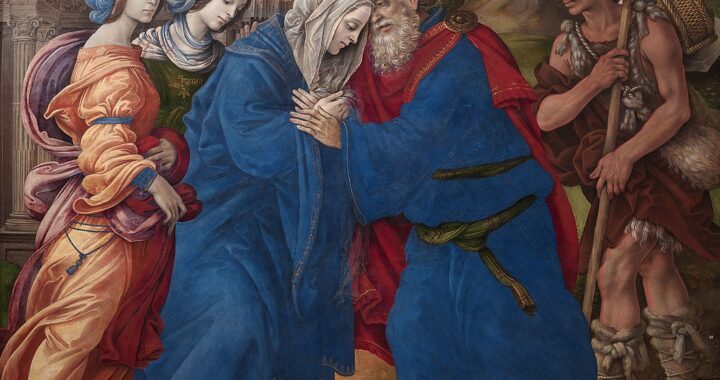and from Wikimedia Commons.
The liturgical calendar of the Catholic Church is a complicated thing, with varying liturgical colors, two cycles of daily Mass readings, three cycles of Sunday Mass readings, and a four-week psalter for the Divine Office. Add in important dates related to the Son of God and commemorations of the saints, and it can start to seem incomprehensible.
But the hierarchy of dates related to our Lord and the saints is actually fairly easy to understand.
There are four categories of commemorations of Jesus Christ and the saints in the Church’s liturgical calendar: solemnities, feasts, memorials, and optional memorials.
The word solemnity comes from two Latin words which are added together and basically mean “annual celebration”, and it’s easy to see why the Church insists that we celebrate these dates every single year all over the world. For example, dates that commemorate important events in the life of Christ – from His Annunciation to Easter Sunday – deserve to be celebrated in a solemn manner every year. Some dates related to the Blessed Virgin Mary and Saint Joseph, as well as dates on which we try to understand great mysteries, such as the Holy Trinity and the Eucharist, are also categorized as solemnities. Saint John the Baptist, the deaths of Saints Peter and Paul, and a commemoration of all the saints in Heaven are all celebrated as solemnities as well.
Although we can informally refer to any commemoration as a feast (as was done in the title of this blog), the Church currently uses the word feast in a very specific way. Feast days are ranked lower than solemnities but higher than memorials. Why?

Public domain, Wikimedia Commons
An excellent example can be found in the celebration of the appearance of Our Lady of Guadalupe to Saint Juan Diego in sixteenth century Mexico. This miraculous event is particularly important to the peoples of the Americas, so this date is counted as a feast in the US and many South and Central American countries. In Mexico, it is unsurprisingly celebrated as a solemnity, but it’s not even an optional memorial in England.
While there are no solemnities on the calendar in October, there are two feasts: the Feast of Saint Luke the Evangelist (Oct. 18) and the Feast of the Apostle Saints Simon and Jude (Oct. 28). Since the Twelve Apostles are the “foundations” of the Church (see Rev. 21:14) and since we wouldn’t know much about our Lord and the apostles if it weren’t for the four evangelists, it makes sense to celebrate them with feasts.
Memorials also commemorate a saint, group of saints, dedication of a church, or mystery of the faith, but they are lower in rank in the hierarchy of the Church’s calendar. Memorials remind us of saints who are important to Catholics all over the world, such as Saint Therese of Lisieux (Oct. 1) and Saint Teresa of Jesus (Oct. 15), not just in France and Spain where those two women spent most of their lives, respectively. Conversely, the North American Martyrs (Oct. 19) are celebrated with a memorial in North America, but not in other parts of the world.
In a few instances, Catholic saints have been able to cross the Catholic-Protestant divide and be celebrated even outside the Catholic Church. For example, some non-Catholic churches celebrate the memorial of Saint Francis of Assisi (Oct. 4) with the blessing of animals.
There are also many optional memorials in the Church’s calendar. This is just what it sounds like; the celebration of an optional memorial is optional, not required. If you attend Mass on Oct. 22, Pope Saint John Paul II may be remembered with extra prayers directed to his intercession, or maybe not.
Some days on the liturgical calendar include more than one optional memorial. For example, on Oct. 5, prayers at Mass may refer to the Polish nun Saint Faustina Kowalska or the American priest Blessed Francis Xavier Seelos – or neither. Additionally, every Saturday of the year can be celebrated as an optional memorial for the Blessed Virgin Mary – but not if there is a memorial, feast, or solemnity on that date for another reason, such as Holy Saturday, which would trump the optional memorial.
Although this sounds confusing, the hierarchy of solemnities, feasts, memorials, and optional memorials can help us recognize which saints or mysteries of the faith that the Church would like us to particularly remember on a given date. And that is the point of the liturgical calendar to begin with: to help us draw closer to God and the saints every day, every month, and every year, until we (hopefully) reach our destination, which is Heaven itself.



